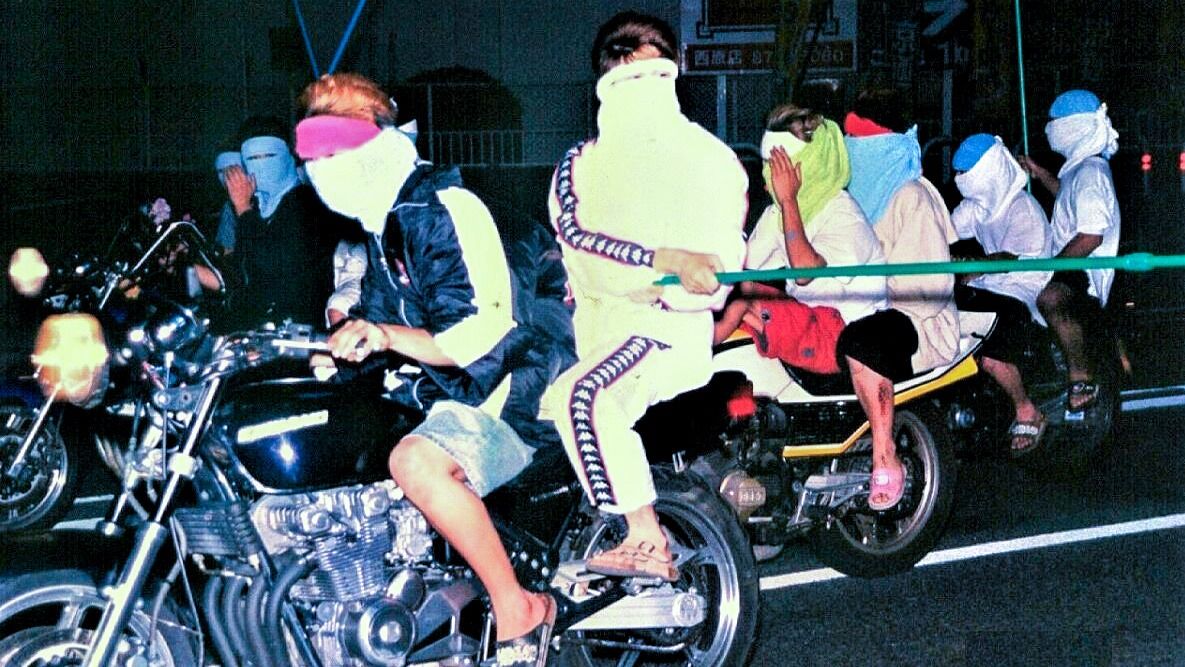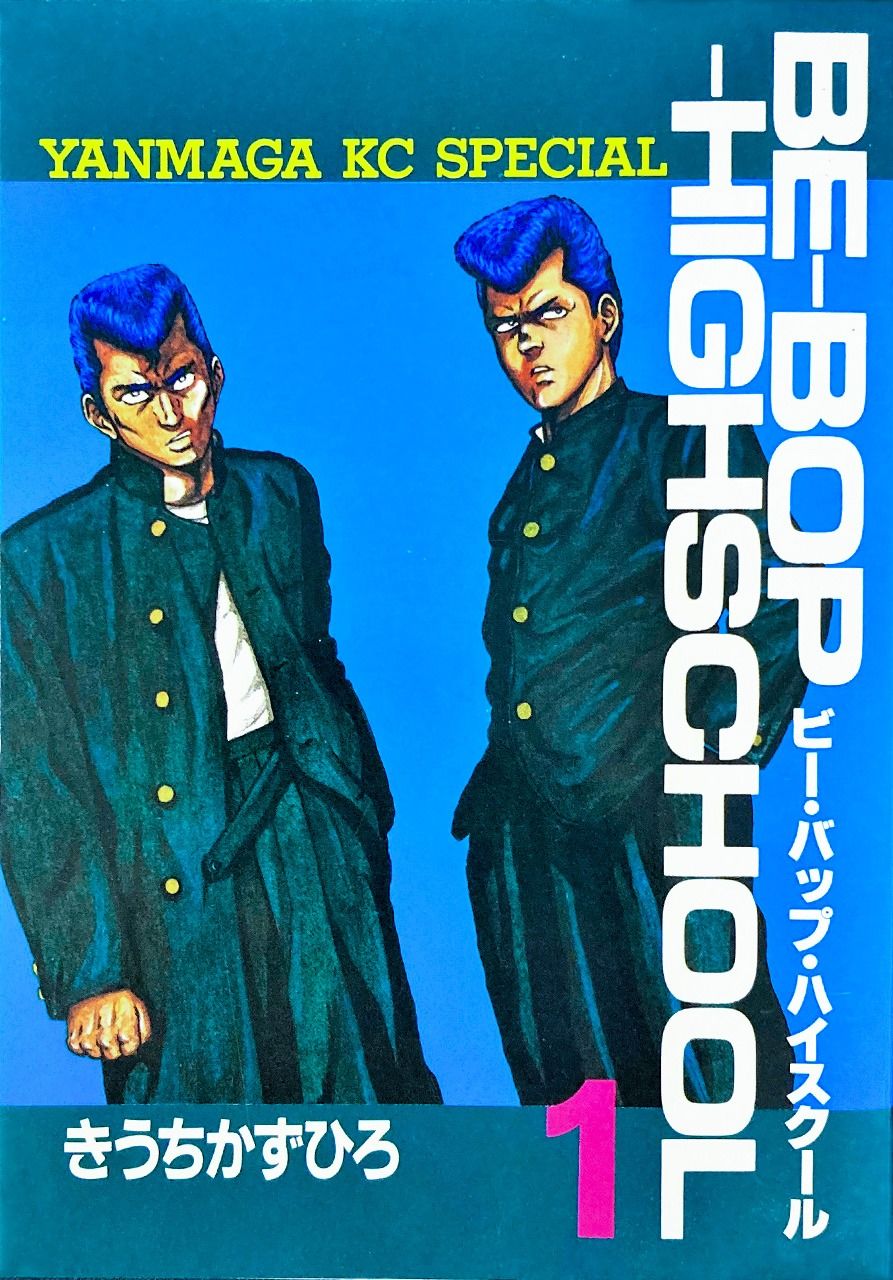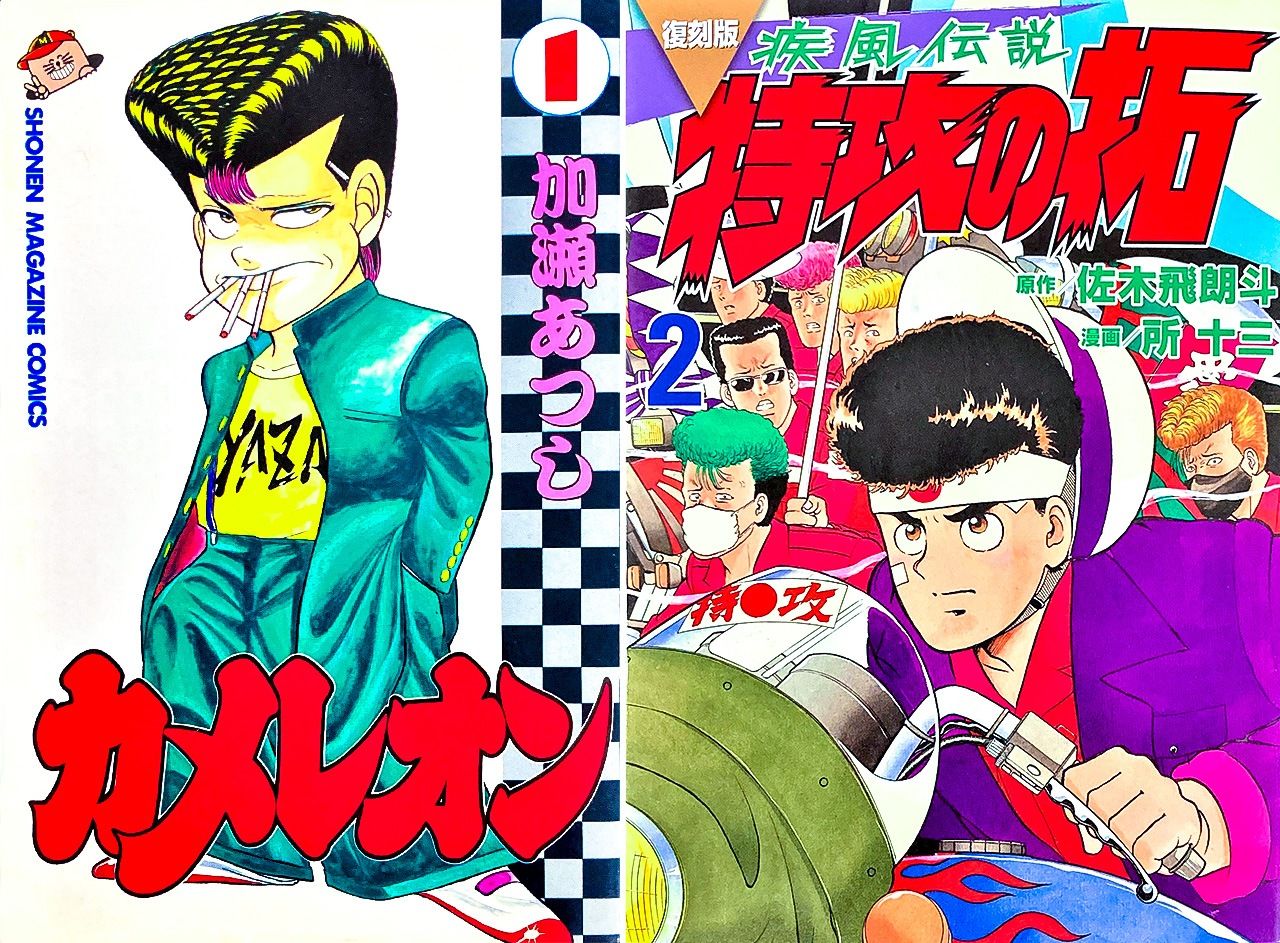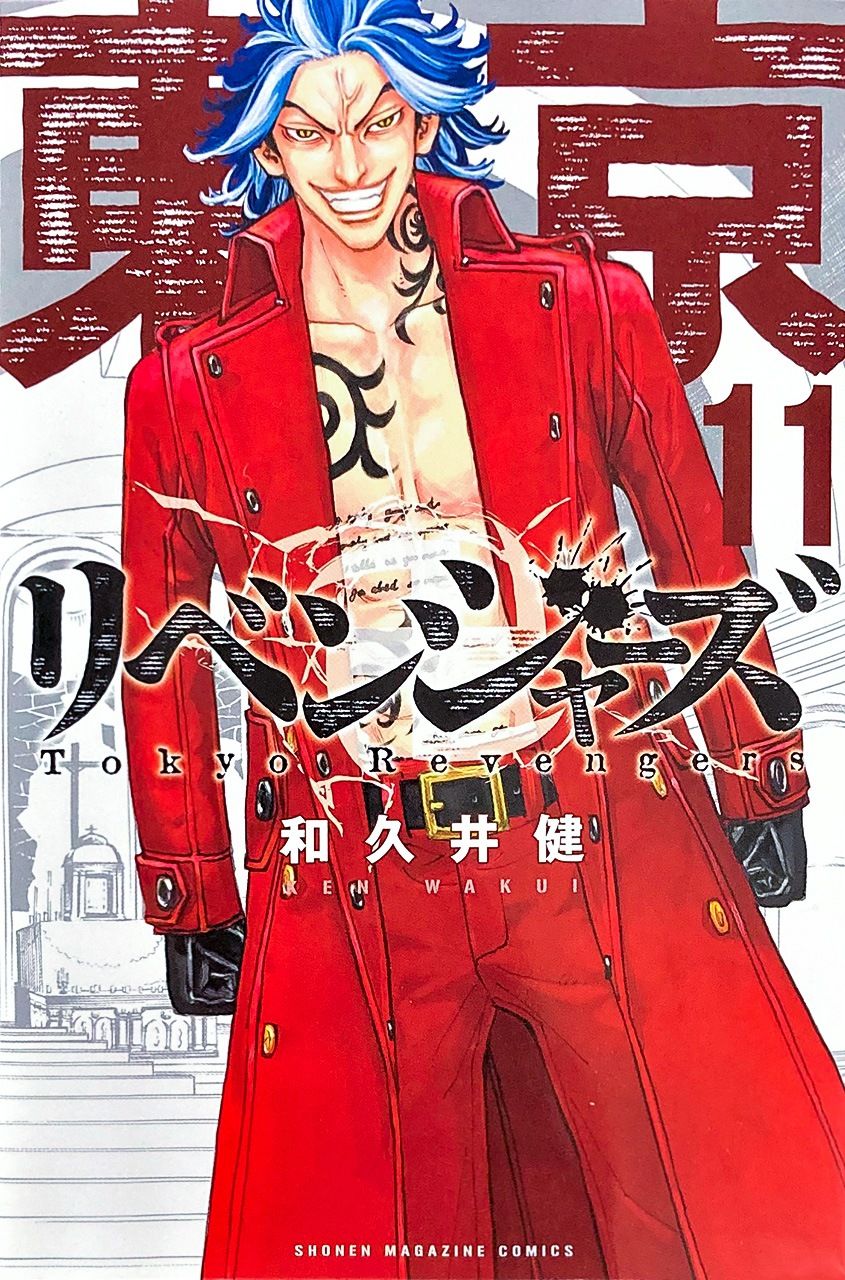
Manga as a Window on Japanese Culture
A Brief History of Juvenile Delinquency via Manga, from “Be-Bop High School” to “Tokyo Revengers”
Manga Anime Society Culture Fashion- English
- 日本語
- 简体字
- 繁體字
- Français
- Español
- العربية
- Русский
From Tsuppari to Yankī
A certain number of young people have always admired delinquents. But when there are enough of these “bad seeds” to form a social stratum, rebels can emerge as antiheroes, launching movements and inspiring new cultures.
Take, for example, the punk rock of Britain and the United States. It began as a musical subculture, but was assimilated into the lives of young people who had never picked up an instrument, spawning new fashions, ideologies, and cultural movements.
In Japan as well, a large social stratum of Japanese youth with antisocial leanings formed in the 1970s and 1980s, spawning unique forms of local music and fashions. At first, rebellious “bad” kids were known as tsuppari, but by the early 1980s a new term gained traction: yankī.
Yankī is thought to originate from “yankee,” as in the slang term for Americans, but it is something of a mystery as to how it came to be applied to Japanese delinquents. There are many theories, none conclusive. Personally, I suspect that there is an association between delinquents and dyed blond hair. Blond hair was associated with Americans, leading delinquents to call one another yankī. From a modern standpoint, connecting Americans and blond hair feels reductive and more than a little problematic, but back then, few Japanese had much firsthand knowledge about the foreign world.
At any rate, the slang term yankī spread from Tokyo to Osaka and other cities, eventually reaching all of Japan.
Unsurprisingly, delinquents were a frequent subject in manga. In fact delinquent manga emerged as a genre, today widely called “yankī manga.”
One of the most popular of these comics was called Be-Bop High School, created by Kiuchi Kazuhiro in 1983. It portrayed delinquency with a realistic edge, showcasing the high school protagonists Nakama Tōru and Katō Hiroshi, both veteran brawlers.

Be-Bop High School ran in the pages of weekly Young Magazine from 1983 to 2003. Collected in 48 volumes, it has sold over 40 million copies to date. (© Nippon.com)
What Be-Bop High School brought to the genre was a fresh sense of realism. There were many popular delinquent manga before it, often featuring over-the-top themes like young protagonists trying to take over all of Japan.
But Be-Bop High School was different. The lifestyles and fashions it portrayed were taken from real life. Characters sported “regent” pompadours, the distinctive hairstyle of the day. Clothes were tailored to be overly long, or incredibly short. The pants were voluminous and the schoolbags distinctly flattened. All of it was taken from study of real-life tsuppari youth.
The Alluring Aesthetics of the Delinquent
What was it about rebellion that so spoke to young people? You might think that delinquents were simply channeling their youthful energy into running wild, but in fact, at its heart delinquency was about aesthetics.
Singer Shima Daisuke’s 1982 hit “Otoko no kunshō” (An Award for a Man) opened with the line “Tsupparu is the only award a man needs.” The word tsuppari in fact comes from this verb tsupparu, meaning to “push through” or “push back.” Rebels of the era, in other words the tsuppari, were pushing through with their own aesthetic choices. But what were they pushing back against? The very story of their nation.
After World War II, the advanced nations of the West shifted from a war footing into manufacturing production, ushering in one of the greatest periods of prosperity in human history. British historian Eric Hobsbawm called it “The Golden Age.”
Japan, along with Germany, experienced a delayed high-growth period as well, but its societal structures remained rooted in those of wartime, as the economist Noguchi Yukio pointed out in his book 1940-nen taisei: Saraba, senji keizai (The 1940 System: Farewell to Japan’s Wartime Economy).
This wartime stance brought a sense of unity to the national community. But for the individual, living in unity essentially meant being a cog in a big machine. As Japan began to prosper, young people began to rebel against the strictures of society. They refused to be cogs in the machine, or to lead humdrum lives as company employees.
Many young people saw the “community” as offering stability with one hand, while robbing them of freedom with the other. To them, the authority figures of the system were enemies—parents at home and teachers in schools. They imagined themselves as pure-hearted, innocent rebels hungry for freedom, “pushing back” against the stability they saw as being forced upon them by adults.
However, the concept of tsuppari delinquents as bad seeds began to shift. For as the Japanese economic bubble burst, the nation itself began to deteriorate.
Transformations in Delinquent Culture
Against the backdrop of this societal change arrived yankī manga like Katō Atsushi’s 1990 Chameleon and the 1991 Kaze densetsu: Bukkomi no Taku (Kamikaze Taku: Speed Legend), by Saki Hiroto and Tokoro Jūzō.
In neither of these series were the protagonists straight-up delinquents. As the stories began, they are bullied children entering high school.
Chameleon is set in Chiba Prefecture. The protagonist, Yazawa Eisaku, lacks in strength or bravery but makes up for it with pluck and quick thinking. Nothing about him looks strong. But a combination of tenacity and astonishing luck causes him to flourish as a charismatic yankī who inspires fellow delinquents all over Japan.

Chameleon (left) ran in 1990–2000 in the weekly Shōnen Magazine. It is collected in 47 volumes. Kaze densetsu: Bukkomi no Taku ran in the same magazine in 1991–97. It is collected in 27 volumes. (© Nippon.com)
Kaze densetsu: Bukkomi no Taku starred Asakawa Taku, a bullied kid whose life is transformed by a chance encounter with Narugami Hideto, leader of the bōsōzoku biker gang Yokohama Gaidō.
For Taku, who joined a gang called Bakuon Kozō after switching schools, getting noticed by a big guy like Narugami unlocks his hidden potential as a delinquent. While he isn’t much of a fighter, he stands up for his fellow gang members and makes miracles happen. Set in Yokohama, it is filled with passion for the “golden age of delinquents” in Japan.
Both of these now-legendary series, which have a combined total of 30 million copies in print, continue to attract fans today. But as they approached the ends of their serializations, Japan was again undergoing tremendous changes. As society grew unstable, the landscape transformed to favor individual competition. Even simply achieving a “humdrum life” as an employee of a company felt increasingly out of reach.
This shift robbed delinquents of their image as innocent rebels, making them seem simply like kids running wild. The themes of entertainment featuring them began to shift as well: from a rebellion against society into a need for validation.
Nostalgia for the Heyday of Yankī Culture
In an era where delinquents no longer seemed cool, a new manga arrived in 2017: Wakui Ken’s Tokyo Revengers. It centered on the idea of creating a new era for rebels.

Tokyo Revengers, serialized in 2017–22 in the weekly Shōnen Magazine, was collected in 31 volumes with a total of 70 million copies in print. It has been made into an anime series, a stage production, and a live-action film. (© Nippon.com)
The series uses a “time loop” to connect nostalgic delinquent past and a modern day in which something important has been lost. The protagonist Hanagaki Takemichi has the ability to transport himself back in time with all of his current memories intact.
All of us have at some time wondered if we could change a decision we made in the past. Hanagaki certainly does. He sees his spunky junior high school days as the peak of his existence, with everything downhill thereafter. At 26, he works in a video store and all of his days feel the same. But one day, his onetime and only girlfriend, Tachibana Hinata, is killed in a conflict involving the Tokyo Manji Gang. Then Hanagaki is pushed in front of a train. It seems like everything is over, but he wakes up 12 years earlier, as his younger self.
The year is 2005. He meets the charismatic leader of the Tokyo Manji Gang, Sano Manjirō, who remarks, “nowadays people think delinquents are so lame.” In his older brother’s day, a decade earlier in the 1990s, bōsōzoku gangs were everywhere, swaggering about and fighting all the time. “Now those guys were badass,” he continues. “I don’t see what was lame about that.”
And then:
“So I’m gonna create a new era for delinquents.”
Such is his ideal. But in the future, the Tokyo Manji Gang includes members who commit crimes without a second thought, even murder. It’s a vicious organization. What went wrong? Who’s the key? How can Hanagaki save his girlfriend from her fate? He decides the only way to change the future is to become the head of the Tokyo Manji Gang himself.
The manga in no way glorifies violent acts. It portrays how the cycle of violence ensnares people, drawing them deeper into darkness. And as the story develops, it asks the hard question of what’s truly important to people.
In modern life, new forms of evil are emerging, such as hangure unaffiliated criminal organizations that are filled with former bōsōzoku gang members, and criminal “dark web” sites on the Internet. What are we losing in modern society? What do we want to gain? Like the time loop in the story, it may well be that the significance of the hit manga Tokyo Revengers will only truly be felt another 12 years down the line.
(Originally published in Japanese. Banner photo: A bōsōzoku biker gang from the 1980s glory years. Courtesy of the Hiroshima Prefectural Police. © Jiji.)